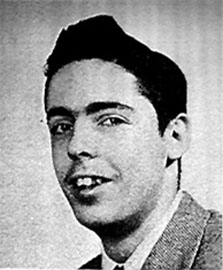Recent research (with my former girlfriend as an author) suggests that at the tissue organizational level the plump rigidity of tissues directly affects the progress of microvascularization. Thus as we ponder the ability of aging tissues to regenerate a new thing like a 3d body map of micropressure might well be advantageous to regeneration or even slowing aging. Literally the plump cheeks of a 20 year old have a reinforced mechanical turgor that affects their vascularization n physiochemical function. It is possible that regulation of cytological network presures with drugs could slow aging or promote regeneration.
Treatment Idea
basically a micropressure map like a ct scan of every tissue that shows the range of pressures with movement n heartbeat as well as the basic osmotic n Na+ turgor of 20 year old tissue as compared with what a person has. Then use drugs to bring specific tissue micropressure towards younger measures. The cited papers all describe how microvascularization n adhesion respond radically to pressure differences when regenerating.
science fair idea: does a compression bandage affect the quality of scarring or the healing time of a wound at the macro or microscopic level
from the abstract:
Exp Cell Res. 2004 Jul 15;297(2):574-84. Links Sieminski AL, Hebbel RP, Gooch KJ.
The relative magnitudes of endothelial force generation and matrix stiffness modulate capillary morphogenesis in vitro.
When suspended in collagen gels, endothelial cells elongate and form capillary-like networks containing lumens. Human blood outgrowth endothelial cells (HBOEC) suspended in relatively rigid 3 mg/ml floating collagen gels, formed in vivo-like, thin, branched multi-cellular structures with small, thick-walled lumens, while human umbilical vein endothelial cells (HUVEC) formed fewer multi-cellular structures, had a spread appearance, and had larger lumens. HBOEC exert more traction on collagen gels than HUVEC as evidenced by greater contraction of floating gels. When the stiffness of floating gels was decreased by decreasing the collagen concentration from 3 to 1.5 mg/ml, HUVEC contracted gels more and formed thin, multi-cellular structures with small lumens, similar in appearance to HBOEC in floating 3 mg/ml gels. In contrast to floating gels, traction forces exerted by cells in mechanically constrained gels encounter considerable resistance. In constrained collagen gels (3 mg/ml), both cell types appeared spread, formed structures with fewer cells, had larger, thinner-walled lumens than in floating gels, and showed prominent actin stress fibers, not seen in floating gels. These results suggest that the relative magnitudes of cellular force generation and apparent matrix stiffness modulate capillary morphogenesis in vitro and that this balance may play a role in regulating angiogenesis in vivo.
as well as
Biorheology. 2006;43(1):45-55. Links Daxini SC, Nichol JW, Sieminski AL, Smith G, Gooch KJ, Shastri VP.
Micropatterned polymer surfaces improve retention of endothelial cells exposed to flow-induced shear stress.
Based on computational fluid dynamics, under identical bulk flow conditions, the average local shear stress in the channels (46 dyn/cm2) was 28% lower than unpatterned surfaces (60 dyn/cm2). When PU surfaces pre-seeded with endothelial cells (EC) were exposed to the same bulk flow rate, EC retention was significantly improved on the micropatterned surfaces relative to un-patterned surfaces (92% vs. 58% retention).
Research Idea These scientists could do a gene chip array study of what genes go differently during wound healing at atmospheric n half n double atmospheric pressure with mice. Then they could add the cytokines the genes code to their vascularization promotion brews.
Edited by treonsverdery, 06 December 2006 - 06:18 AM.










































